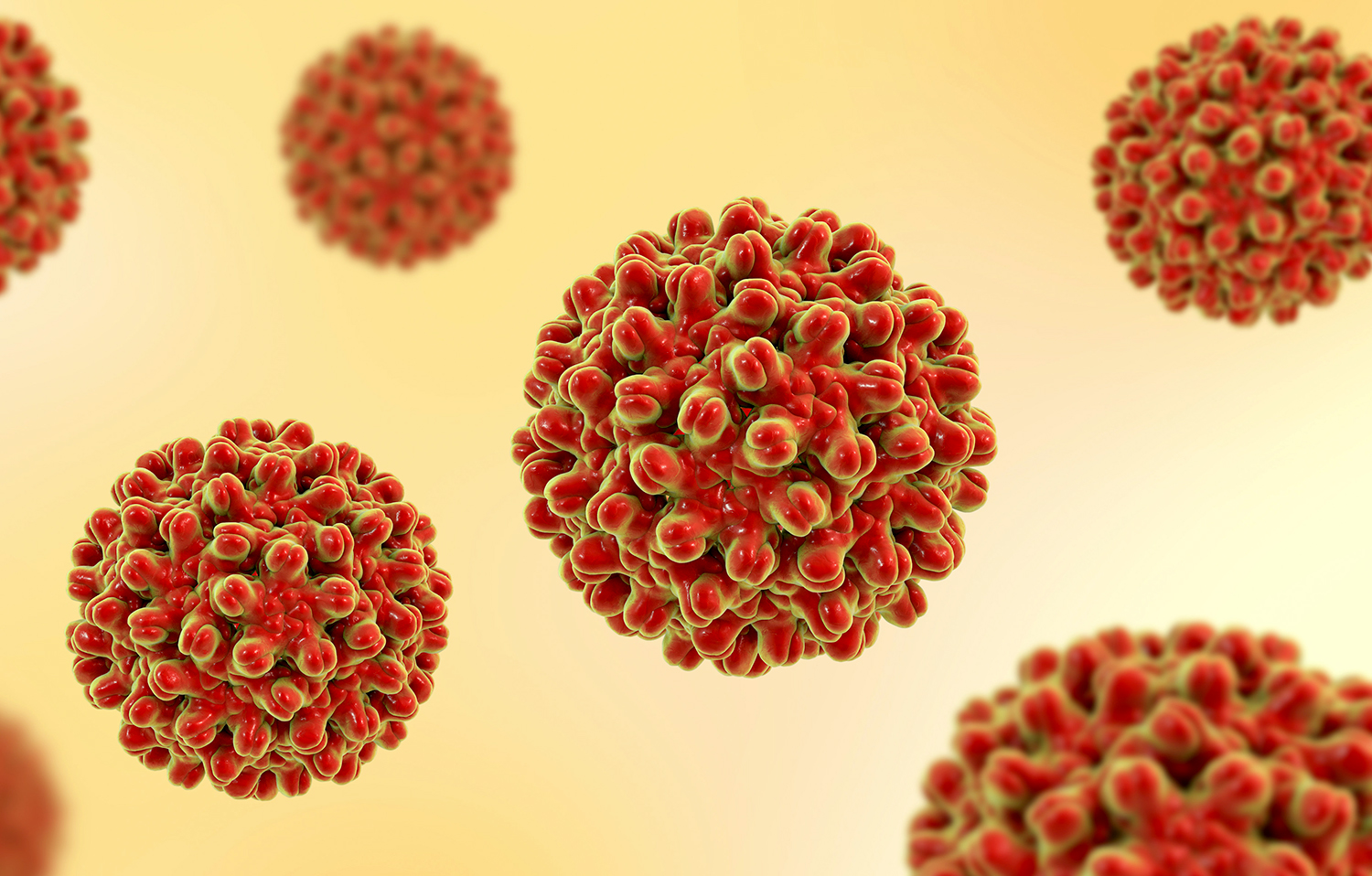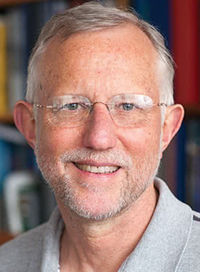Researchers may have found an Achilles heel for hepatitis B

3D illustration of hepatitis B virions (Kateryna Kon)
Tiny, dangerous, and easily transmitted, hepatitis B virus (HBV) chronically affects about 296 million people and kills about 1 million every year. This stealthy virus invades the liver and remains largely asymptomatic until it culminates in cirrhosis or cancer.
Most treatments try to inhibit the virus’s polymerase (pol) protein. But those treatments are lifelong and not curative. Now researchers from the lab of Rockefeller’s Charles M. Rice, who is also director of the Stavros Niarchos Foundation Institute for Global Infectious Disease Research at Rockefeller, have revealed never-before-seen mechanisms that may lead to new therapeutic approaches for HBV. They published the results in Cell.
“The current inhibitors can mitigate the infection but can’t eradicate it,” says Bill Schneider, a research assistant professor in Rice’s Laboratory of Virology and Infectious Disease, and senior author on the paper. “Basic science can provide new insights and lead to different strategies. That’s why we went back to the drawing board to learn more about this virus.”
An unusual organism
The HBV genome is a masterpiece of economy—and as a consequence is unusually conservative. More than half of it contains overlapping reading frames, regions where nucleotides encode more than one protein. Because a single mutation within one of these frames can lead to a change in the other, the virus must maintain strict control over these intricately connected regions to prevent potentially catastrophic effects.
And yet HBV is clearly flexible enough to adapt to new environments and hosts. “It’s a very successful virus in humans, and its close relatives infect a variety of birds and mammals,” Schneider says.
How HBV manages this delicate balance between genetic rigidity and flexibility has been poorly understood, because these overlapping frames are difficult to tease apart. Their collective action obscures the mechanisms of individual proteins.
Long on researchers’ radar has been the pol protein, which plays essential roles in HBV replication. A multipurpose molecule, its importance is evinced by its size; it’s far larger than other viral proteins and wraps around two-thirds of HBV’s circular genome, sharing one of the overlapping reading frames with three other proteins.
To better understand its dynamic components, Rice’s team employed a new approach they developed last year that delivers RNA into cultured cells to produce viral DNA, proteins, and other products. The approach allowed them to uncouple, or separate, the functions of proteins in overlapping reading frames and obtain a clearer view of pol.
“Imagine two sheets of transparent paper with different text stacked on each other. If you can remove one of the sheets, it will be easier to read,” Schneider says. “That is what this RNA delivery system allows us to do.”
Next, they used deep mutational scanning—a high-throughput method that can reveal the mechanics and behaviors of tens of thousands of protein variants. It enabled them to test nearly every possible variant in the pol protein and see how it responded to each change.
Stalled ribosomes
One of their first unexpected discoveries was the strict requirement for amino acids called prolines near the end of the pol protein. These rigid molecules are known to slow down ribosomes, the molecular machines that make proteins by traveling along the length of a messenger RNA molecule and translating code into chains of amino acids. Multiple prolines in a row can stop a ribosome in its tracks. And when a ribosome halts at a particular spot in the code, it temporarily blocks translation.
Sure enough, they found that ribosomes that build the pol protein stopped just before the very end, leaving the protein tethered to the ribosome like a balloon tied to a child’s hand.
“It just wouldn’t let it go,” Schneider says.
They suggest that this stalling may give the protein time to fold properly to perform its job and, importantly, increase the chance it will bind to the correct RNA—the one that encoded it. It’s only then that the protein is released.
Aiming for new targets
It’s long been known that the pol protein prefers to reverse transcribe the RNA from which it originated (known as cis-preference) rather than finding another RNA to copy, but how it achieved that—through ribosome stalling—had been unknown until now.
This process may be a way for the pol protein to only propagate proven RNAs—an example of if it’s broken, don’t copy it. Or it could be for efficiency.
“Not many pol proteins are made, so the virus wants to make sure that when one is made, it can do its job,” he says. “The cis-preference by tethering mechanism probably helps ensure that the protein isn’t just floating around in the cell looking for its cognate RNA. It’s a more efficient process.”
In the next stage of their research, they’ll explore how to manipulate pol’s cis-preference. “Once you understand a mechanism, you have the ability to perturb it and find out what the consequences are,” he says.
One idea is to prevent ribosome stalling by mutating the prolines that trigger the pause. “That would probably inhibit the virus, and it may make it more difficult for the virus to develop drug resistance,” he says.



